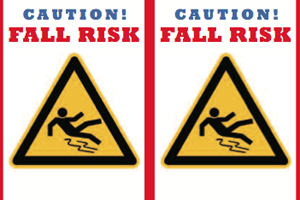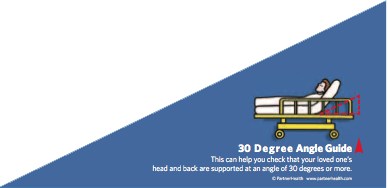- Home
- News
- Features
- Topics
- Labor
- Management
- Opinions/Blogs
- Tools & Resources
Checklists For Patients: How To Stay Safe In a Hospital
By BLAIR HICKMAN, ProPublica-– Propping up a patient’s hospital bed at a 30-degree angle can help prevent hospital-acquired pneumonia.
Using alcohol wipes kills staph bugs, but you need bleach wipes to kill C. diff germs. High-protein snacks can help prevent bed sores.
However, most patients don’t know these things. And doctors and nurses can easily overlook these basic care practices.
Karen Curtiss makes it her mission to remind them.
After her father and husband both experienced adverse events in the hospital, Curtiss says, she founded Campaign Zero to arm patients with the information they need for a safe stay. Her book, “Safe & Sound in the Hospital: Must-Have Checklists and Tools for Your Loved One’s Care,” collects scores of these simple actions and details that can make a big difference in a patient’s recovery.
Checklists have become more common for surgeons in the operating room. But according to Curtiss, she’s the only one producing checklists on hospital care for patients and families.
To make the checklists, Curtiss read everything she could get her hands on: nursing textbooks, information from the CDC, academic publications. She took her work to specialists and focus groups. And then distilled all of the information into something so simple a sixth-grader could read it.
We sat down with Curtiss, who is a member of ProPublica’s Patient Harm Community, to find out more about patient-centered checklists.
Why checklists for patients?
Conventional wisdom says that when you go to the hospital, you take someone with you.
There’s nothing in college that teaches you how to be an advocate for patients. There’s nothing in your life experience. We have an army of people sitting bedside, who are ripe for education.
We put a checklist for patients out on Campaign Zero, but I could tell from the traffic that people were finding it only after a problem had occurred.
They were Googling bed sores and how to treat them, staph infections. People do not prepare to be sick. So I wrote the book.
I learned during my research that there are repeated problems that put people back into the hospital that nobody ever tells you about.
For example, if you have congestive heart failure, you need to weigh yourself every single day. If you gain two pounds in a day, you have to get to a doctor right away.
But I don’t know how many people are told that.
Even if you are told that when you’re discharged, many people are still on drugs and not thinking clearly. And it’s a hurried process.
They need someone there with faculties intact to ask the questions, sweat the details, know what to look for and be encouraged to ask questions. The simple affirmation that it’s OK to ask questions makes people more comfortable.
Furthermore, we know checklists for patients work.
Atul Gawande, the author and surgeon, wrote in “The Checklist Manifesto” that the ideal checklist is no more than ten items.
And they are effective. It’s been proven with other checklist projects, some that are being rolled out throughout the country. So I said OK, if checklists work for the medical community, then they can work for families. It’s a potential win-win.
A lot of people in ProPublica’s Patient Harm Community say that when they ask questions, providers push back. What would you say to them?
I relate to that so much. And it’s unfortunate, but it does happen.
First of all, before you choose a hospital, make sure to vet them.
Some hospitals talk the talk, and others walk the walk. You can look at their Leapfrog score or their Consumer Reports rating, if you have access to it. [Editor’s Note: You can also check Medicare’s Hospital Compare.]
But that’s hindsight. If you have problems after you’ve committed to a hospital, you can always call the hospital advocate.
You can call a Condition Help, also called a Condition H, if you feel like your loved one isn’t being heard, or cared for properly, and a team will respond. It’s also sometimes called a rapid response team – hospitals call it different things. But very few are transparent about the fact that you can do that.
I’ve heard of doctors quitting patients because they ask too many questions.
Obviously, you find another doctor. You find another hospital.
A recent study suggested 27 percent of doctors and nurses feel it’s inappropriate for patients to ask them to wash their hands. It’s because they feel chastised. Their egos are bruised.
So what should a patient do? Stick to your guns. Be humble, and play to those egos. “I know you’re the expert, but I want to protect you as much as my loved one.”
That’s why in my book I have pullout cards.
Sometimes, it’s easier for people to read a note than hear people say it. That’s also why some of those cards are silly; humor can help break the ice.
A lot of items on patients checklists seem to address communication.
Communication is the number one challenge. In the 1970s, there were two or three doctors involved in a patient’s care. Now, there are up to 15. That’s good news. But the bad news is how do they communicate? Care is much more fractured because it’s specialized.
I encourage people to be a part of the shift change, which is called the hand-off. That’s when they share notes with the doctors starting their shift. It’s a huge opportunity to spot inaccurate information, fill in gaps and raise questions. Ideally, the hand off should occur bedside. If they resist, you can always ask to go to where they’re doing it. It might be in a break room.
How are providers responding to the checklists?
We’ve had a lot of support. And not just from providers. Blue Shield of California is giving the book to patients at University of California, San Francisco, who are employed by the city and county of San Francisco. Community Trust Bank in Kentucky, which has 1,000 employees, is giving everyone who has a pre-planned admission a copy of the book.
I also collaborated with Mary Foley, who’s a prominent leader in nursing innovation and head of nursing research and innovation at the UCSF, to create a companion nursing workshop.
Nurses on the front line probably haven’t had up-to-date education on the basics of patient safety because they’re really busy and went to nursing school a long time ago.
Plus, people can walk in with these checklists, and one look from a nurse who isn’t on board can make them feel like they were thrown under the bus. The workshop is meant to help nurses understand how engaging families and supporting safe care practices can benefit them.
What would you say is the one most important thing someone can do?
I have two: Ask people to wash their hands.
The greatest hazard in hospitals is infection, and the number one thing you can do to prevent infections is hand washing. Don’t let people give you flack about it. The second thing is to take notes. Take notes to ask questions and be organized. When the doctors and nurses come in, if you’re prepared with your questions in notes, then you use your time wisely.
Also note when medications are given, when tests are ordered and the test results. You could have tests ordered at 9 a.m., and the results might be critical for next steps. If they don’t come until 9 p.m., that’s a problem. And a detail like that can get lost.
People respect stuff that’s written down. And if the doctors and nurses know you’re on it, they will be more accountable. It’s very subtle, but it takes the drama and emotion out of it, and makes the experience more businesslike.
Please subscribe to WOW’s posts by email:
[subscribe2]
List your business in the premium web directory for free This website is listed under Human Resources Directory






